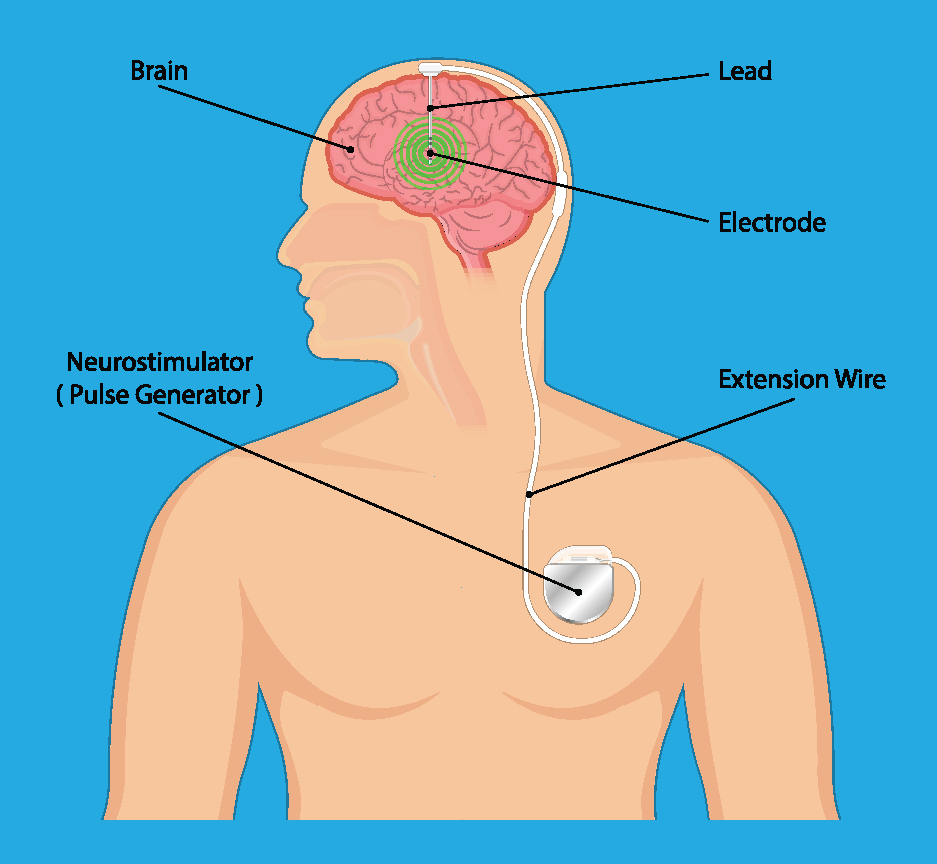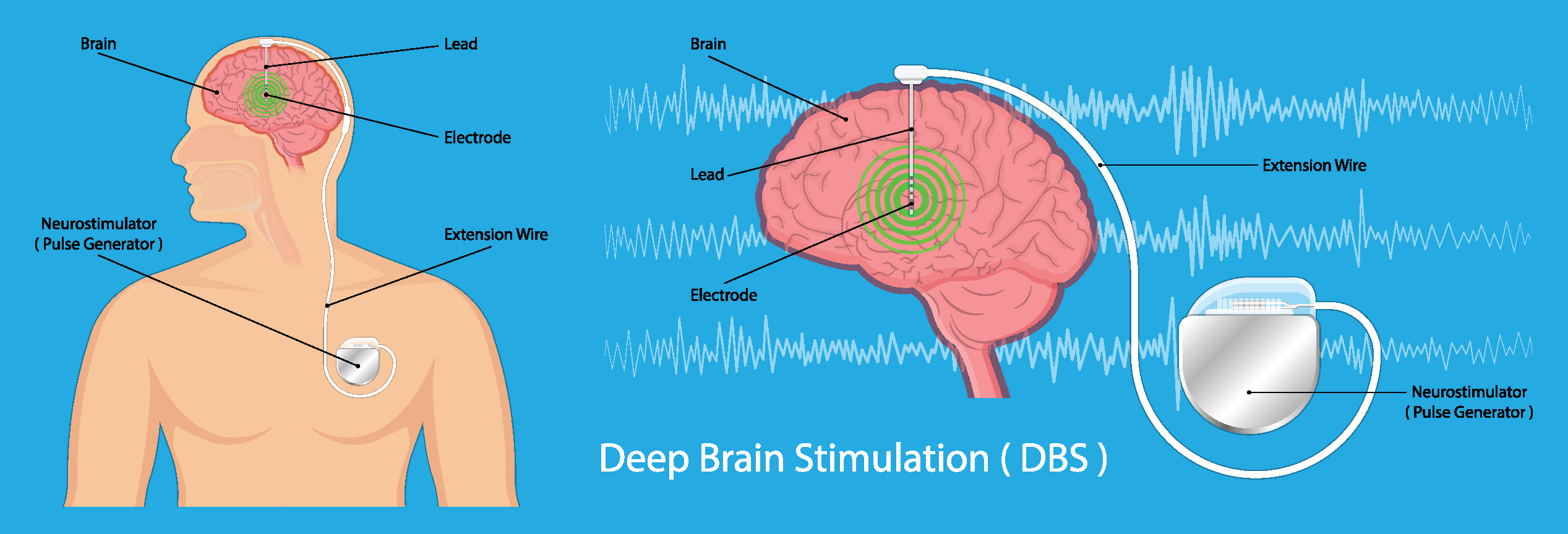Deep Brain Stimulation: Relief from Movement Disorders

Movement disorders refer to conditions which cause abnormal voluntary or involuntary movements. Symptoms are caused by disorganized electrical signals in specific areas of the brain. Those challenged with essential tremor, Parkinson’s disease, dystonia, and other neurological conditions may benefit from deep brain stimulation (DBS), especially when symptoms progress or medications become less effective.
DBS is performed by neurosurgeons who precisely place one or more wires, called electrodes or leads, inside the brain. The lead is connected to a pacemaker-like device called a neurostimulator that is surgically implanted into the patient’s chest. The neurostimulator then conducts continuous pulses of electric current through the leads to interrupt the disorganized brain signals causing tremor or other movement disorder symptoms.
Insertion of the leads and neurostimulator are typically accomplished in two steps. First, the neurosurgeon places the leads either into one or both sides of the brain, and this is often performed while the patient is awake. In a second procedure the neurostimulator is implanted in the chest while the patient is asleep. Programming of the neurostimulator can be performed by the neurosurgeon, neurologist, or primary care physician, to find the optimum settings that are effective for each patient. There are different devices available that can tailor therapy to each individual patient, and the device representative often has an important role to help the patient become familiar with their programmer and programming settings.
For patients with essential tremor, the most common movement disorder, DBS can return a person to normal daily activities like dressing, shaving, eating, and drinking. Symptoms of Parkinson’s disease such as tremor, bradykinesia and rigidity are especially well-treated with DBS, and medication dosages can often be decreased. Dystonia is an uncommon movement disorder, with symptoms of abnormal posturing and twisting movements, which also respond to DBS.
DBS can also be used to treat patients with epilepsy, obsessive-compulsive disorder, or certain pain disorders. These unique disorders are often managed by specialized neurologists and psychiatrists, and a thorough discussion with your specialist is necessary to determine if you are a candidate for this therapy.
At MHSI, a neurosurgeon or functional neurosurgeon will work with a patient’s neurologist or primary care physician prior to and after surgery to ensure that the optimal therapy is achieved.
For more information about DBS, visit our patient education page on the topic, click here. If you or a family member or friend might benefit from DBS, please schedule a consultation by calling 248-784-3667 or visit MHSI.us.
MHSI Neurosurgeons Who Perform DBS
